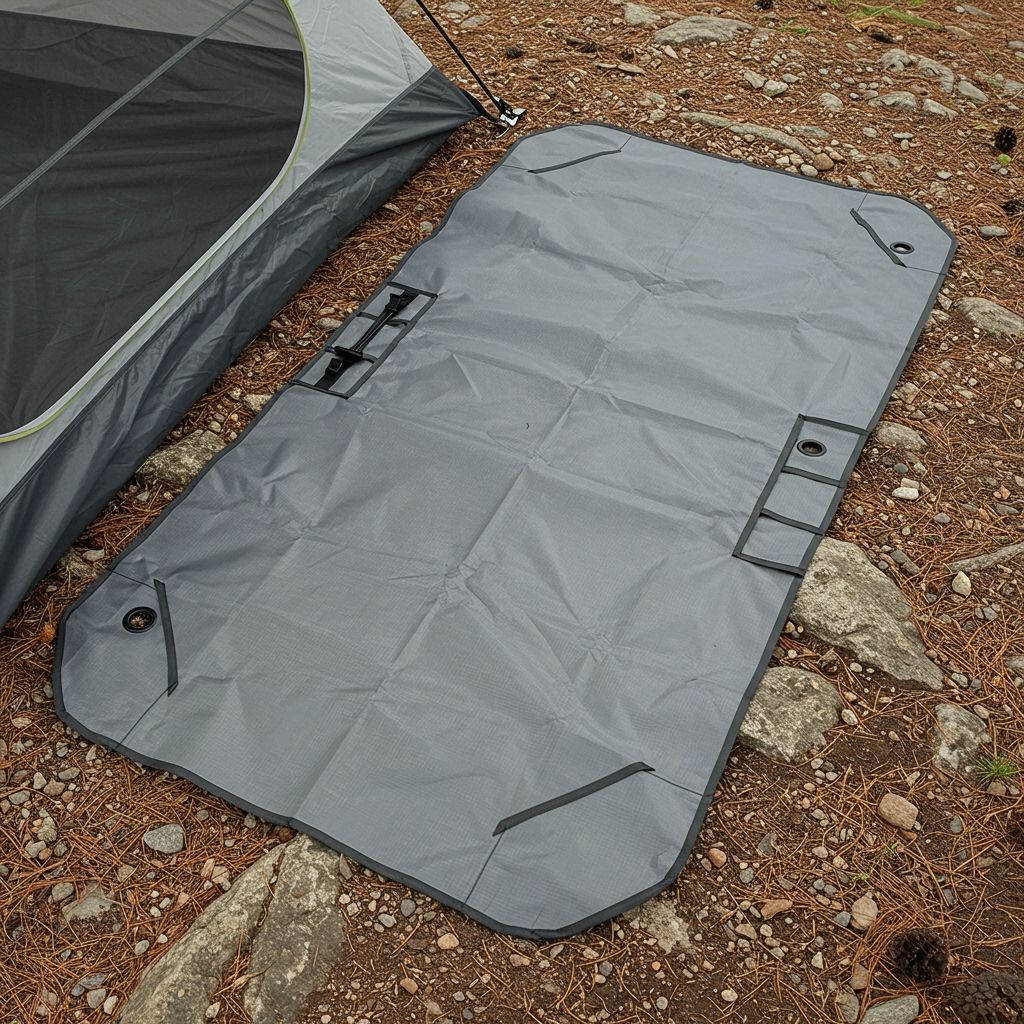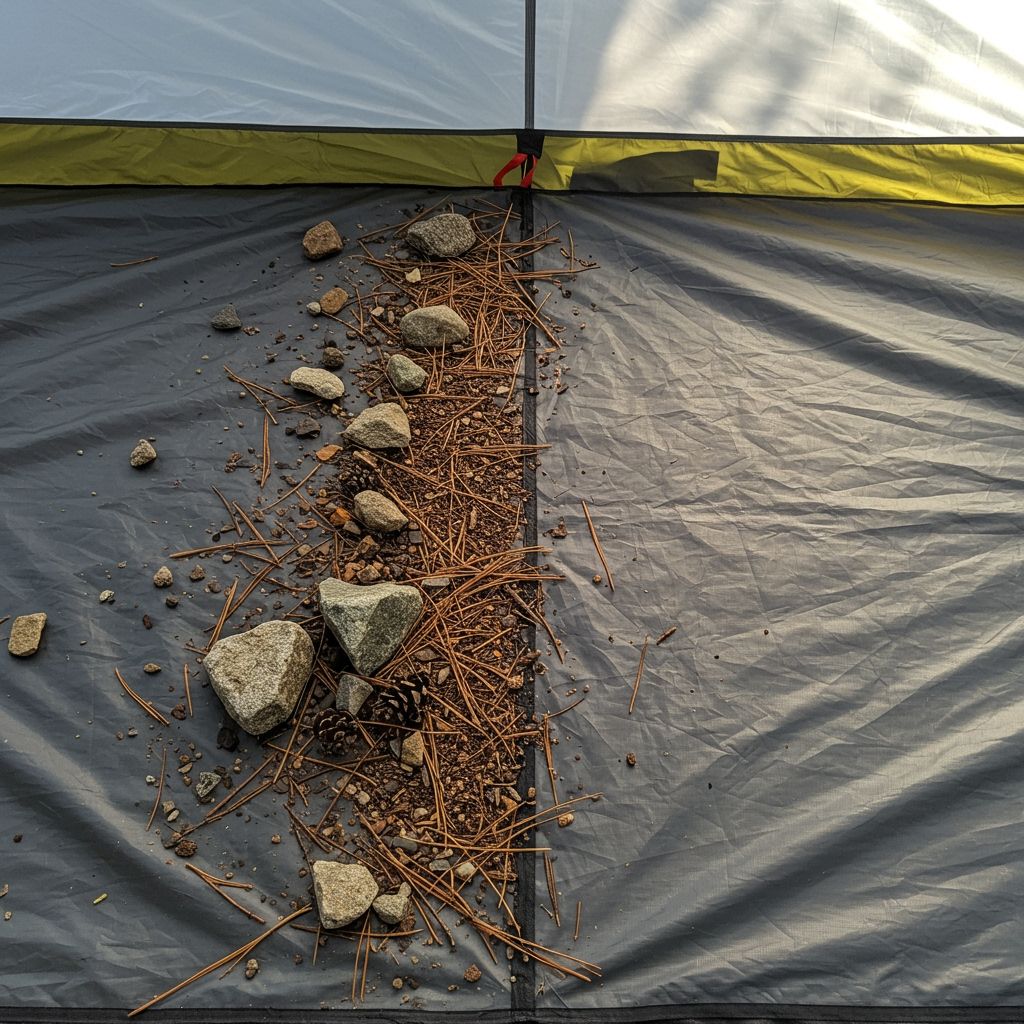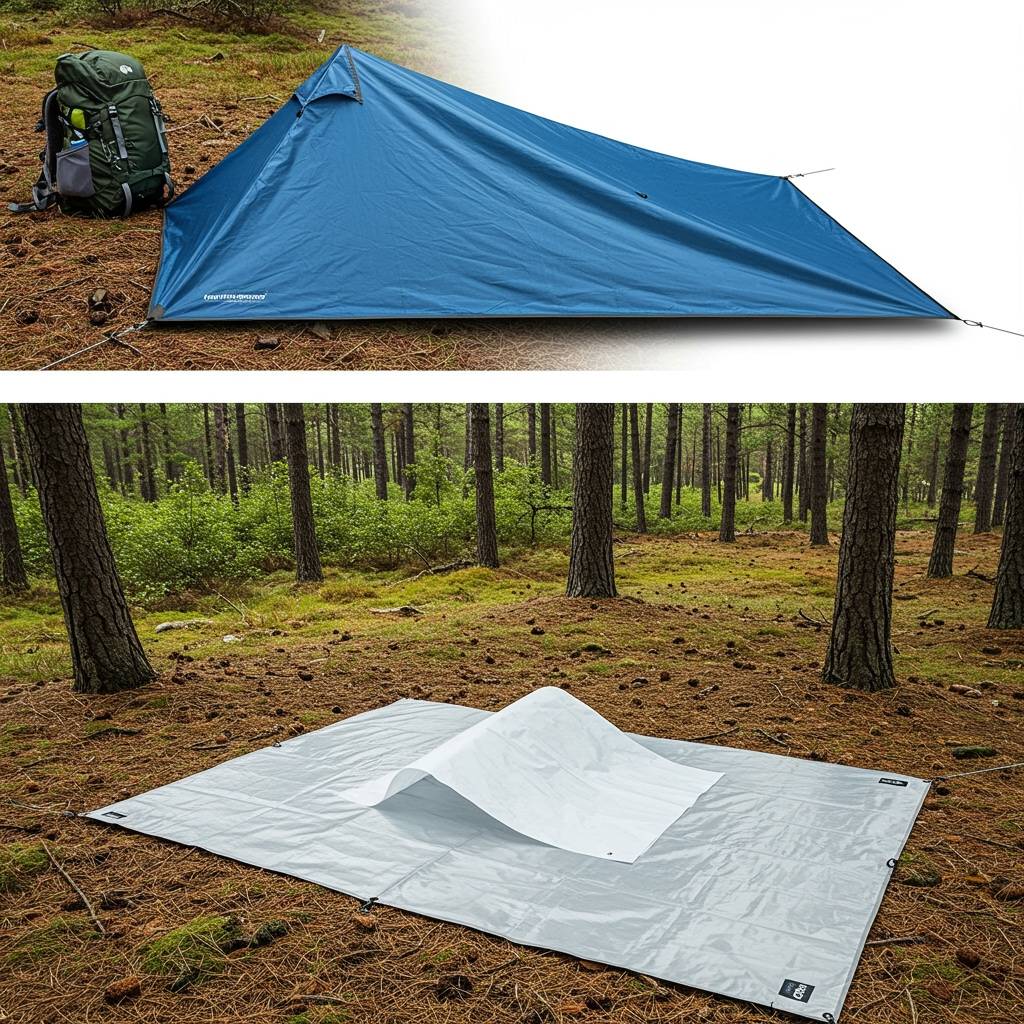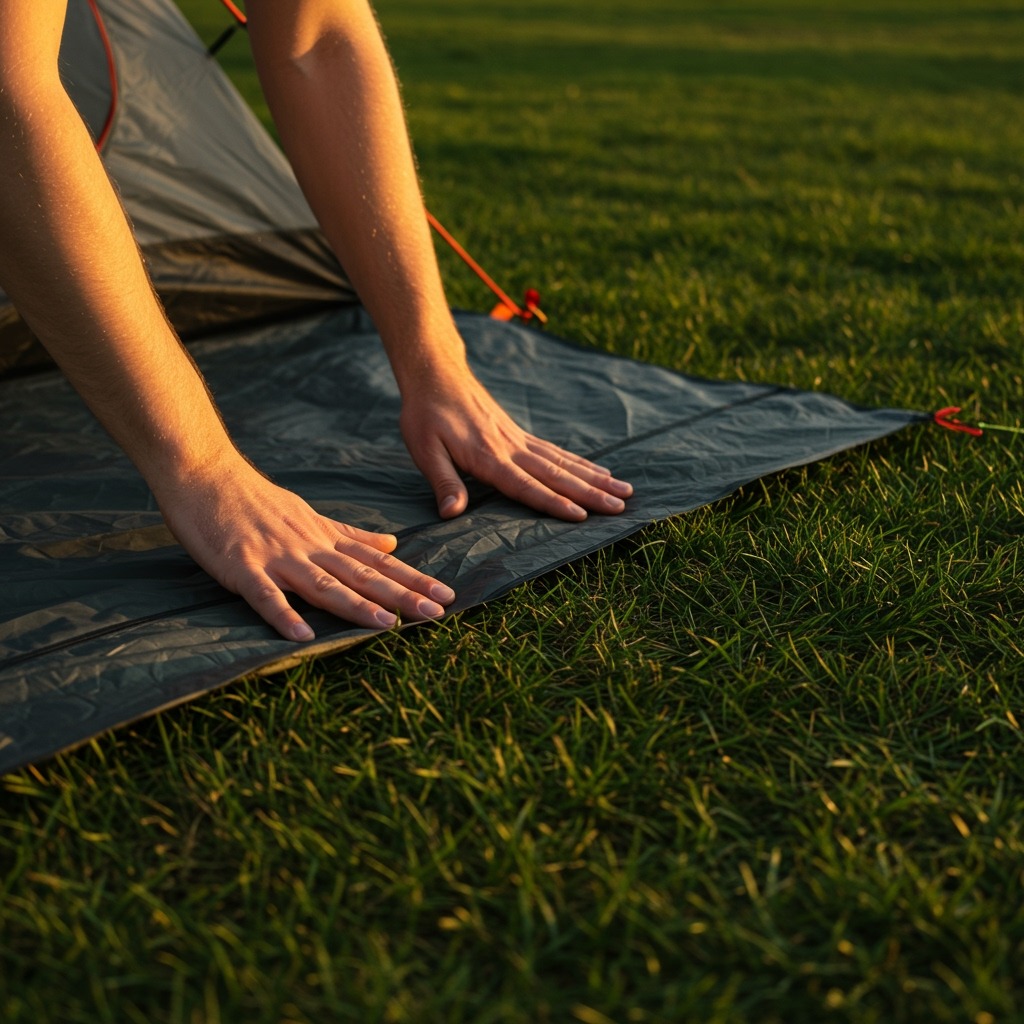You’ve got your tent, your sleeping bag, your cooking gear – all set for that perfect night under the stars. As you unroll your tent, you might pause. What about that extra piece of fabric, that ground cloth, often called a tent footprint? Is it just another accessory to buy, or a vital piece of gear that will protect your investment and keep you dry?
It’s a question every camper faces, from the weekend warrior to the seasoned thru-hiker. And the answer isn’t a simple yes or no. I’ve spent years out in the elements, seen tents fail, and witnessed the magic of a perfectly dry setup. I’m here to cut through the noise, tell you exactly what a tent footprint does, when it’s absolutely essential, and when you might be better off without one. Let’s make sure your next camping trip is comfortable and hassle-free, starting from the ground up.

What Exactly Is a Tent Footprint?
Before we dive into the debate, let’s get clear on what we’re talking about. A tent footprint, also known as a ground cloth or ground tarp, is a piece of durable, waterproof material specifically designed to be placed directly underneath your tent’s floor.
Its primary purpose is to act as a protective barrier, separating your tent from the harsh ground below. Think of it as a custom-fit shield for your tent’s most vulnerable part. Footprints are typically made from tough, water-resistant fabrics like nylon, polyester, or polyethylene, often with a waterproof coating. They’re usually cut slightly smaller than the tent’s actual floor dimensions, a crucial detail we’ll get into.
Why Consider a Tent Footprint? The Benefits
So, why bother with this extra layer? The benefits often outweigh the minor drawbacks, especially for certain types of camping.
A. Protection from Abrasion & Punctures

Your tent floor is constantly rubbing against the ground. This friction, combined with sharp objects, can quickly wear down the fabric.
- Guard Against Damage: Rocks, twigs, pinecones, roots, and even abrasive dirt can create tiny tears or punctures in your tent floor. A footprint takes the brunt of this abuse, protecting your tent from premature wear and tear. It’s like a rugged armor for your tent’s base.
- Extends Tent Life: By preventing these micro-abrasions and punctures, a footprint significantly extends the lifespan of your tent. Tents are an investment, and a relatively inexpensive footprint can save you from costly repairs or having to replace your tent sooner than you’d like.
B. Enhanced Waterproofing
Even if your tent has a waterproof floor, an extra barrier can make a huge difference, especially in wet conditions.
- Keeps Groundwater Out: When it rains, water can pool underneath your tent. Even a highly waterproof tent floor can eventually “hydrostatically press” water through if there’s continuous pressure from below, especially if you’re on uneven ground or in a depression. A footprint adds a crucial layer of defense, ensuring that groundwater doesn’t seep into your living space. This is absolutely critical for staying dry when camping in the rain.
- Prevents Condensation from Below: While often overlooked, ground moisture can also contribute to condensation inside your tent. A footprint helps create a barrier against this moisture evaporating up through your tent floor, leading to a drier interior.
C. Keeps Tent Cleaner
Nobody wants to pack up a muddy, grimy tent.
- Easier Cleanup: The footprint acts as a sacrificial layer. All the mud, dirt, pine sap, or gritty sand sticks to the footprint, not your tent floor. When you pack up, you simply shake off or wipe down the footprint, leaving your tent much cleaner. This makes your post-trip cleanup significantly faster and easier, meaning you can get back to planning your next adventure.
D. Preserves Tent Warranty
Some tent manufacturers actually recommend or even require the use of a footprint for their tent floor warranty to be valid. It’s a testament to how much they understand the protective value this simple piece of gear offers. Always check your tent’s specific warranty details.
E. Added Insulation/Comfort
While not its primary function, a footprint can offer a minor boost in comfort.
- Slight Thermal Barrier: It adds a thin layer of material between your tent floor and the cold ground, offering a subtle bit of insulation. It’s not a substitute for a good sleeping pad, but every little bit helps.
When a Tent Footprint Might Be Overkill: The Drawbacks
Despite the clear benefits, there are situations where a tent footprint might not be the best choice. It often comes down to weight, cost, and the specific type of camping you’re doing.
A. Added Weight & Bulk
For minimalists and long-distance hikers, every ounce counts.
- Backpacking and Ultralight Setups: A dedicated footprint adds weight and takes up space in your pack. For those counting grams, this can be a significant drawback. If your tent floor is already made of a very durable fabric (e.g., 70D nylon), some backpackers choose to skip the footprint to save weight.
- Is the Protection Worth the Load? This is the core question. For a multi-day backpacking trip where every gram matters, you have to weigh the risk of floor damage against the burden of carrying an extra pound or two. This is where mastering camping hacks for reducing overall pack weight really pays off.
B. Additional Cost
Quality footprints can be pricey.
- Expense: A custom-fit tent footprint from your tent’s manufacturer can sometimes cost a significant percentage of the tent’s original price. This can be a barrier for budget-conscious campers.
- Alternatives Are Cheaper: As we’ll discuss, effective alternatives can often be sourced for much less money.
C. Can Trap Water (If Not Used Properly)
This is a common mistake and can actually make your tent wetter.
- The “Bathtub” Effect: If your tent footprint extends beyond the perimeter of your tent, rain will fall onto the exposed footprint and then run under your tent, pooling water between the footprint and your tent floor. This creates a “bathtub” effect, making your tent floor susceptible to hydrostatic pressure and allowing water to seep through.
- The Importance of Size: This is why a proper tent footprint is always cut slightly smaller than the tent floor, or you must fold any excess material neatly underneath the tent.
DIY Alternatives to a Standard Tent Footprint

Don’t want to buy a brand-specific footprint? You’ve got options! Many resourceful campers use everyday materials or clever substitutes.
A. Polycro Groundsheet
- Ultralight and Cheap: Polycro (a type of polyethylene film) is incredibly lightweight, surprisingly durable for its weight, and very affordable. It’s popular with ultralight backpackers.
- Disposable: It’s cheap enough that you can just toss it after a few uses if it gets too beat up. You can often find it in the form of window insulation kits.
B. Heavy-Duty Tarp
- Affordable and Versatile: A standard blue or green tarp from a hardware store is a common and budget-friendly alternative. They are very durable and offer excellent waterproofing.
- The Key: Folding: The crucial step is to fold the tarp so that none of it extends beyond your tent’s perimeter. This prevents water from channeling under your tent.
- Bulky: Tarps are often heavier and bulkier than dedicated footprints, making them less ideal for backpacking but perfect for car camping.
C. Tyvek
- Durable and Lightweight: Tyvek (the house wrap material) is another excellent choice. It’s incredibly strong, tear-resistant, and relatively lightweight. It’s also waterproof.
- Can Be Cut to Size: You can buy a roll of Tyvek and cut it precisely to the size you need for your tent, ensuring it doesn’t extend past the edges.
- Crinkly at First: New Tyvek can be noisy and crinkly, but it softens up with use.
D. Emergency Blankets or Shower Curtains
- Improvised Solutions: For short trips or emergencies, a heavy-duty emergency blanket (the silver, crinkly kind) or even an old shower curtain can serve as a temporary footprint. These are generally less durable but can work in a pinch for primitive camping scenarios where you need a quick solution.
How to Properly Use Your Tent Footprint

Getting a footprint is only half the battle; using it correctly is just as important.
A. Placement
- Smooth Side Down (Usually): Most footprints have a coated side and a non-coated side. Generally, the coated (more waterproof) side goes facing the ground to repel moisture effectively. However, always check the manufacturer’s instructions, as some may recommend the opposite.
- No Wrinkles: Lay the footprint out as smoothly as possible before pitching your tent on top. Wrinkles can create pressure points or trap water.
B. Sizing is Key
- Always Smaller or Folded Under: This cannot be stressed enough. If your footprint is larger than your tent floor, or if you don’t fold any excess material neatly underneath, it will collect rainwater and funnel it under your tent, making your tent wet. Make sure the footprint is completely concealed by your tent’s floor from above.
C. Site Selection Matters
Even with a footprint, choosing a good tent site remains paramount.
- Clear Debris First: Before laying down your footprint, take a few minutes to clear away any sharp rocks, sticks, or other debris from your chosen tent site. This makes your setup more comfortable and reduces the chance of anything puncturing the footprint or your tent floor.
- Consider Drainage: Look for a high, flat spot. Avoid depressions where water might collect if it rains. Even with a footprint, you want to minimize the amount of standing water beneath your tent.
Is a Tent Footprint Right for You? Making the Decision
Now for the big question: do you need a tent footprint? The answer truly depends on your camping style and priorities.
A. Car Camping/Family Camping: Yes, Almost Always
- Durability and Comfort: When car camping, weight and bulk are rarely concerns. A footprint adds excellent protection, enhances waterproofing, and makes cleanup a breeze. It’s a no-brainer for family trips or casual camping.
- Investment Protection: Since your tent isn’t being carried far, there’s no reason not to give it maximum protection and extend its life.
B. Backpacking/Thru-Hiking: It Depends
- Weight vs. Longevity: This is where the debate heats up. If you’re an ultralight backpacker, you might choose to forgo a footprint to save weight, relying on a durable tent floor and careful site selection.
- Conditions Matter: If you anticipate rocky terrain, prolonged rain, or setting up on potentially abrasive surfaces frequently, a lightweight alternative like Polycro or Tyvek might be a worthwhile investment to protect your tent.
- Tent Floor Material: If your tent has a very thin, lightweight floor fabric (common in ultralight tents), a footprint becomes much more critical for protection. A thicker, more robust tent floor might not need it as much.
C. Tent Material
- Thin Floors = Need Protection: Tents designed for ultralight backpacking often have very thin, delicate floor fabrics to save weight. For these tents, a footprint is highly recommended to prevent premature wear and tear.
- Robust Floors = Optional: Tents with thicker, heavier-duty floor fabrics (common in car camping or four-season tents) are more resistant to abrasion and punctures. A footprint is still beneficial for waterproofing and cleanliness, but less critical for basic protection.
D. Terrain
- Rocky, Wet, Abrasive Ground = Definite Yes: If you know you’ll be pitching your tent on granite slabs, sharp gravel, or consistently wet ground, a footprint is a must-have.
- Soft, Dry Grass/Pine Needles = Less Critical: On softer, drier surfaces, the risk of damage is much lower, and you might get away with skipping the footprint, especially if you’re ultralight.
E. Weather
- Rainy Forecast = Yes: If there’s any chance of rain or wet ground, a footprint provides that crucial extra layer of waterproofing. You want to stay dry when camping in the rain.
- Consistently Dry Conditions = Less Critical for Waterproofing: In arid environments with no chance of rain, the waterproofing aspect is less vital, though abrasion protection remains a benefit.
Ultimately, a tent footprint is a small investment that offers significant benefits in terms of tent longevity, waterproofing, and cleanliness. While ultralight backpackers might agonize over every ounce, for most campers, it’s a smart addition to your gear list.
FAQ: Your Tent Footprint Questions Answered
Can I use any tarp as a tent footprint?
Yes, you can! The key is to make sure it’s cut or folded so it’s slightly smaller than your tent floor, or else it will collect water and funnel it under your tent.
Does a tent footprint add insulation?
It adds a minimal amount of insulation by creating a barrier between your tent floor and the cold ground. However, its primary purpose is protection and waterproofing, not significant warmth. Your sleeping pad does the heavy lifting for insulation.
How do I clean a tent footprint?
Simply shake off any loose dirt or debris. For stubborn mud or grime, wipe it down with a damp cloth and mild soap (like dish soap). Rinse thoroughly and air dry completely before packing it away to prevent mildew.
Are integrated tent footprints good?
Some tents have very thick, durable floors that are essentially integrated footprints. These are great because they offer built-in protection without the need for an extra piece of gear. However, they can add weight to the overall tent.
Can a footprint damage my tent?
No, not if used correctly. If a footprint is larger than your tent floor and extends out from under it, it can funnel water under your tent, making your tent wet. But the footprint itself protects the tent; it doesn’t damage it.
